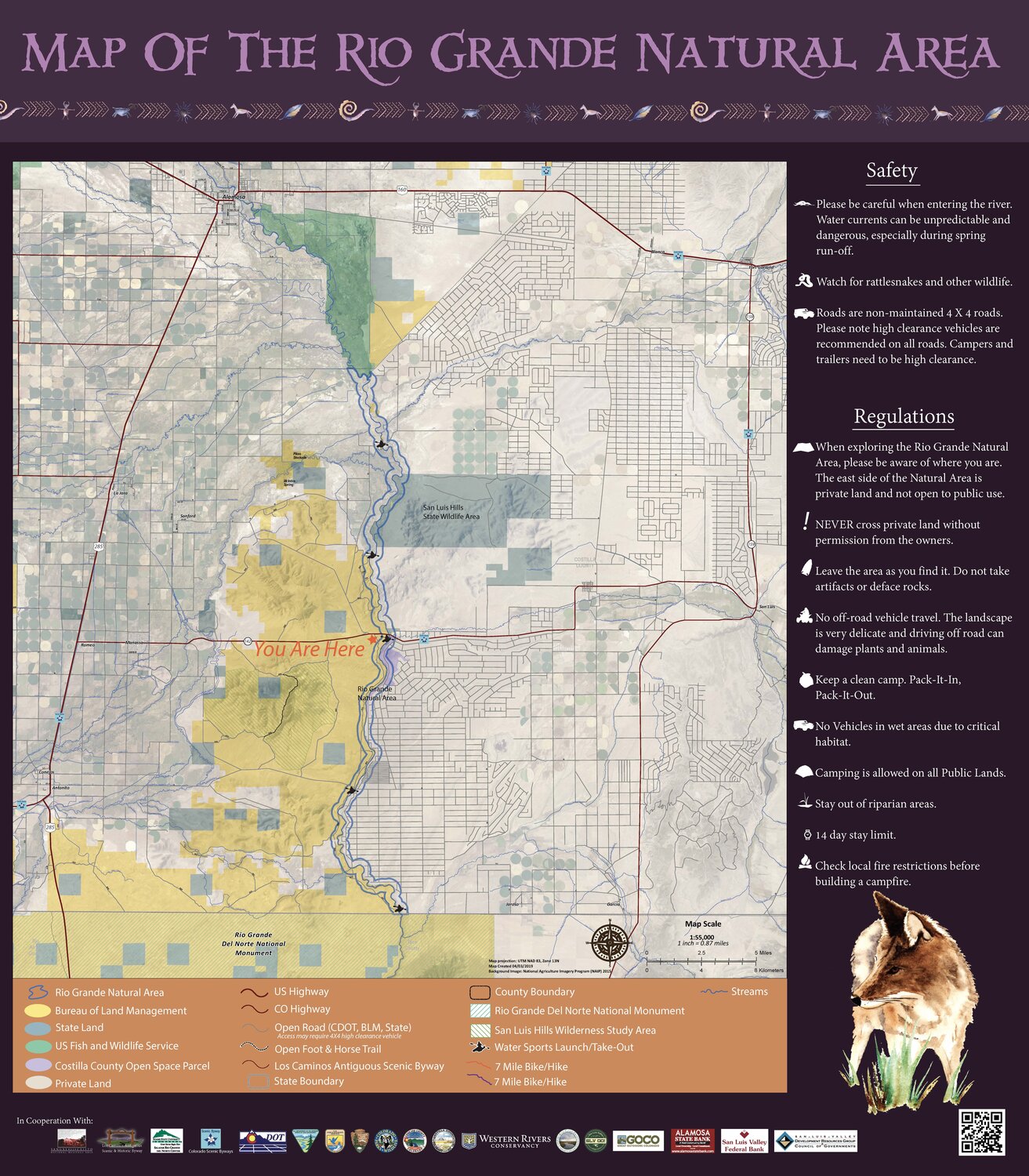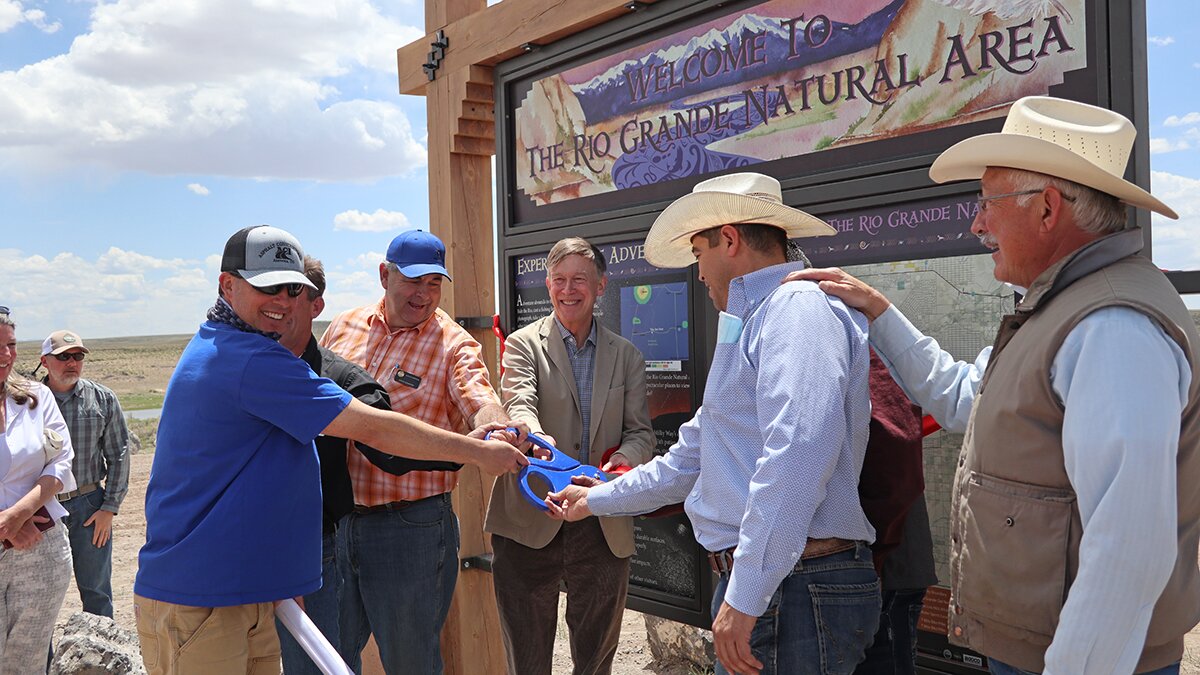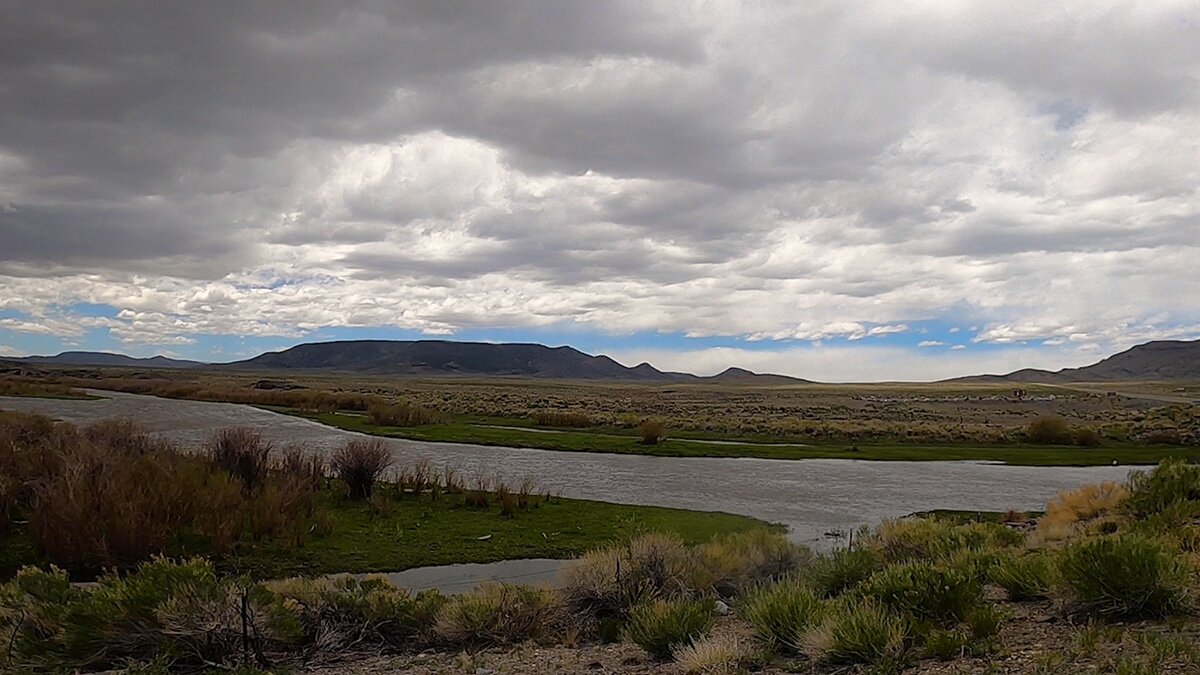Community celebrates Rio Grande Natural Area's history, culture, and wildlife

Costilla and Conejos Counties, Colo. — In southern Colorado, beside the Rio Grande, elected officials and community members gathered on the border of Costilla and Conejos counties to honor Colorado Public Lands Day at the Rio Grande Natural Area.
During the event, new signs were unveiled depicting information about the area's geography, history, culture, wildlife, and recreation.
The Natural Area, created by Congress under the Rio Grande Natural Area Act of 2006, was established to conserve, restore, and protect resources stretching 32 miles from the southern boundary of the Alamosa National Wildlife Refuge to the New Mexico state border. The area includes one quarter mile on each side of the Rio Grande.

“This is a very beautiful and wonderful area,” said Ken Salazar, a former US. senator who served as President Obama's secretary of the interior from 2009 through 2013. In both roles, Salazar worked to help realize the Natural Area's recognition. Additionally, he was born and raised here—holding deep, generational family ties.
“Many of us worked on this designation for a long time,” Salazar said. “This event was long in the making.”
The Rio Grande Natural Area is within the Sangre de Cristo National Heritage Area, a region recognized by Congress for its natural resources and unique historic significance. The Heritage Area comprises Conejos, Costilla, and Alamosa counties within the San Luis Valley.
“So much is unique about this area,” said Rio de la Vista, director of the Salazar Rio Grande del Norte Center at Adams State University, which works to preserve the cultural and physical landscape of the upper Rio Grande. “There are so many stories in this landscape.”
The Public Lands Day event also recognized the first people of the continent with Danza Azteca de Anahuac—an indigenous prayer dance—and a traditional blessing of land and water. According to de la Vista, there are over 11,000 years of history of Native American people in the region.
“When you have water in a dry place, there’s something magical about it,” said de la Vista.
“The river, key to survival in a dry area, drew settlers here from Northern New Mexico in the mid-1800s,” she added. “The river corridor provided a place for them to establish agriculture, farming and ranching.”
The Natural Area is used as a field school for ASU and other institutions. De la Vista said that it shows multiple challenges within the same landscape, and can serve as a learning tool for some of the most pressing issues facing the west.
“You have public and private lands. You have historical, cultural, and tribal attributes. You have farming and ranching practices. You have recreation interests wanting to access those lands. It’s a microcosm of issues across western landscapes,” said de la Vista. “How do we do these things in ways that are responsible, and care for the land? We need to be inclusive and get everyone’s perspective.”
De la Vista said the level of attention at the Natural Site was special. Speakers at the celebration included Governor Jared Polis, Senator John Hickenlooper, and County Commissioners.
“This is the beating heart of Colorado—this is the soul of Colorado,” said Polis. “Public lands are part of our identity. It’s who we are in Colorado. It’s who we are in the San Luis Valley.”
“It’s kind of the hidden secret of the state,” added Conejos County County Commissioner Mitchell Jarvies. “We don’t want to keep it secret, but we do want to keep it sacred. We want to keep it protected. We want people to come and enjoy it, and feel the strength that comes from this area.”
Kate Perdoni is a multimedia journalist for Rocky Mountain PBS and can be reached at kateperdoni@rmpbs.org.

Related Stories
Communities and livelihoods were created and maintained as the land became part of the United States after the Mexican-American War. These customs, traditions, ways of being, and heritage remain reflected in this region today. All of these aspects contribute to the Heritage Area designation.
“There’s also phenomenal wildlife habitat, and immense natural beauty along the river,” said de la Vista. “The cliffs, the expanses of it — it’s a hidden gem here in Colorado. You can explore and see the land the way it’s been for a really long time. It doesn’t have much human impact. There is certainly some. But a lot of it is pretty open and wild.”
Public lands, according to de la Vista, are instrumental to local communities for a multitude of reasons, including ranching and farming. Additionally, the land can be utilized for hunting, fishing, and exploration.
“It provides multiple resources, including human wellbeing, livelihood, and wildlife,” added de la Vista.
